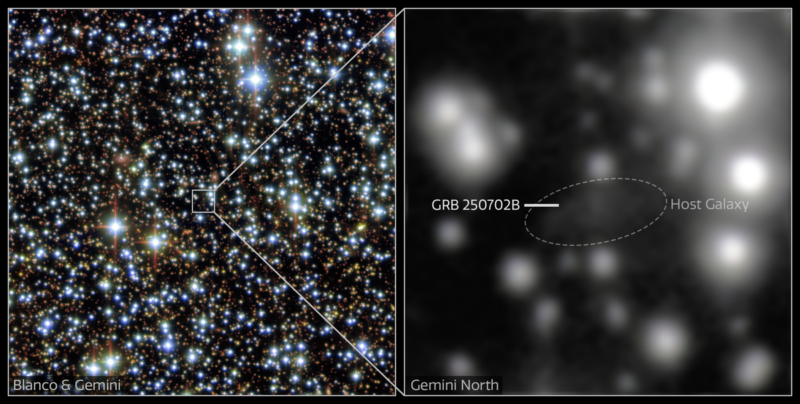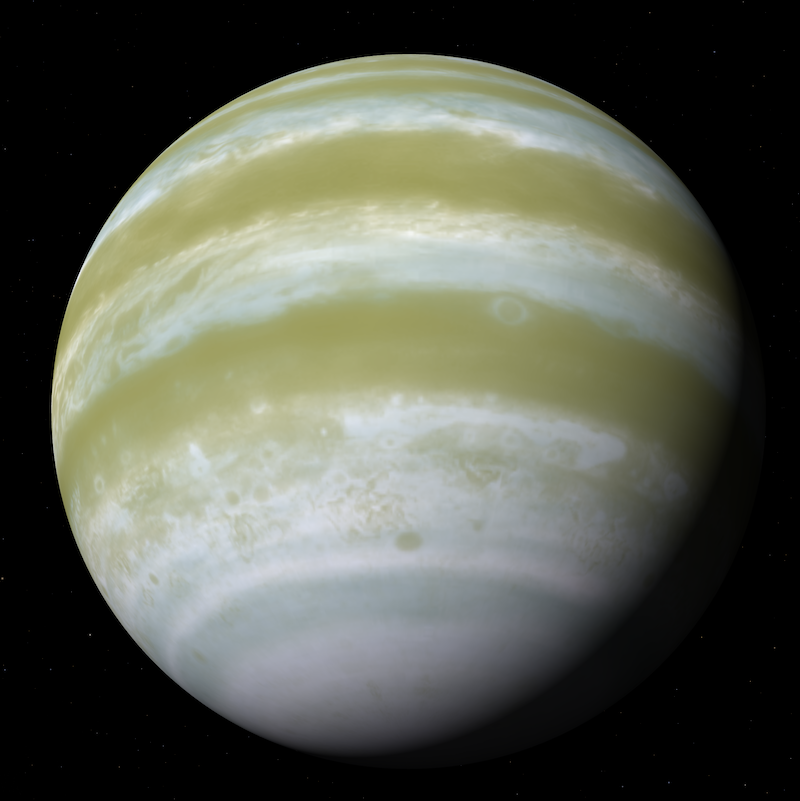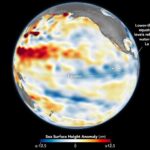Now Reading: Frigid Titan has soaring, bubbling clouds with unusual rains
-
01
Frigid Titan has soaring, bubbling clouds with unusual rains
Frigid Titan has soaring, bubbling clouds with unusual rains
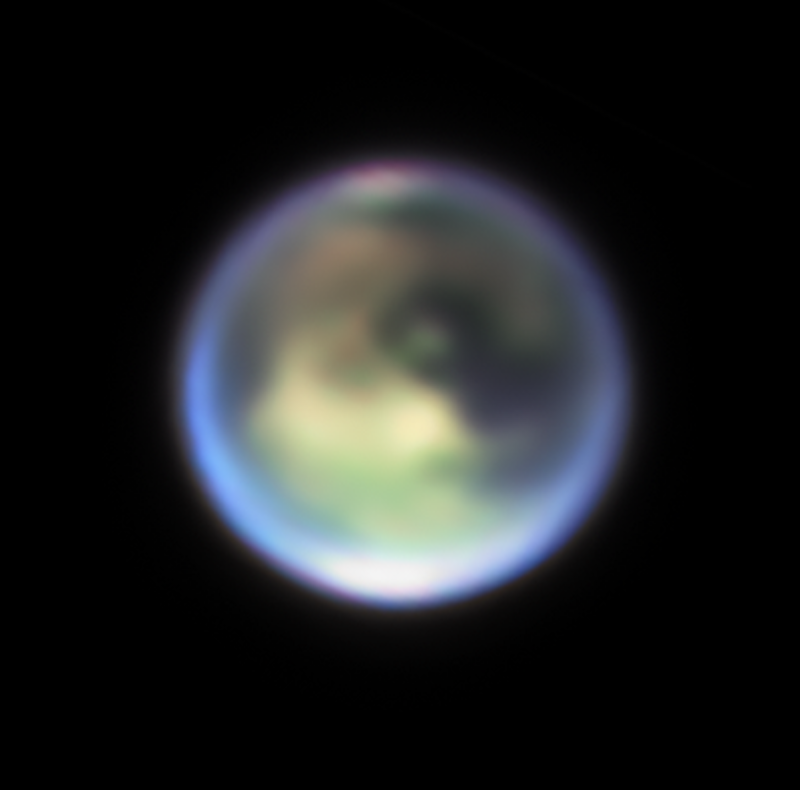

- Titan is Saturn’s largest moon. It is the only moon in the solar system with a substantial atmosphere, clouds, and rain.
- Its weather system is remarkably similar to Earth’s, but the rain, lakes and seas are composed of liquid methane and ethane rather than water.
- Astronomers have now observed clouds bubbling upward in Titan’s northern hemisphere. These clouds produce the rains that replenish the lakes and seas near the north pole.
Watching the weather on Titan
Saturn’s moon Titan is a frigid world with lakes and seas made of liquid methane and ethane. Titan also has weather, like Earth, with clouds and methane/ethane rain. Now, for the first time, scientists have observed cloud convection in Titan’s northern hemisphere, where most of the lakes and seas are. The researchers said on May 14, 2025, that they combined data from the Cassini mission with observations from the James Webb Space Telescope and the Keck II telescope in Hawaii to detect the convection. The observations provide evidence that, just like the water cycle on Earth, Titan’s rains help replenish its lakes and seas.
Apart from the extremely cold temperatures – about -290 degrees Fahrenheit (-180 C) – and the global orangish hydrocarbon haze, Titan’s weather is remarkably Earthlike. Liquids on Titan are methane and ethane instead of water. But they behave in a similar manner to water on Earth. Methane rises to form clouds and then sometimes falls back to the surface as rain. This is Titan’s methane cycle, analogous to Earth’s water cycle. Lead author Conor Nixon at NASA’s Goddard Space Flight Center in Greenbelt, Maryland, said:
Titan is the only other place in our solar system that has weather like Earth, in the sense that it has clouds and rainfall onto a surface.
The researchers published their peer-reviewed findings in Nature Astronomy on May 14, 2025. A preprint version is also available on arXiv.
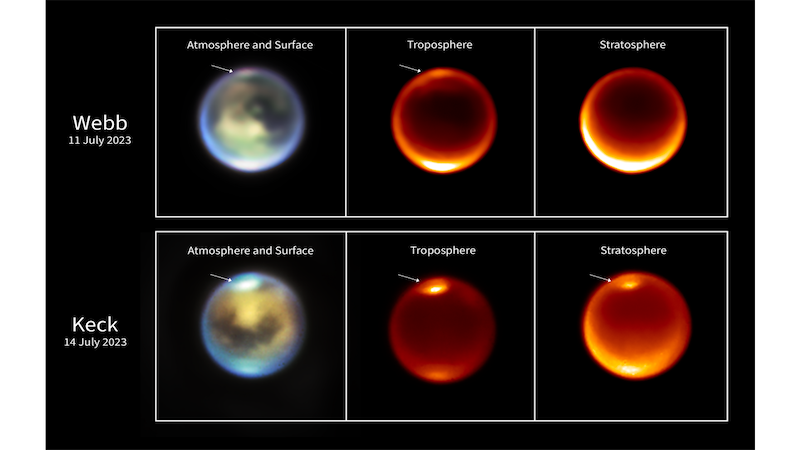
Cloud convection in the northern hemisphere
Cloud convection is part of that cycle. On Earth, clouds can form when heat and moisture rise upward in the atmosphere. In the cooler upper air, the moisture condenses to form droplets that can fall as rain. The same thing happens on Titan, but with liquid methane/ethane.
Astronomers had seen convection on Titan before, but only in the southern latitudes. But now, the new study provides evidence of cloud convection in the northern latitudes as well. And, notably, this is where most of the lakes and seas are located. They are likely a source of evaporating methane/ethane that rises to higher altitudes in the atmosphere. Subsequently, that moisture then falls back to the surface as rain, replenishing the lakes and seas.
The researchers saw clouds that appeared to rise to higher altitudes over periods of days. They made these observations in November 2022 and July 2023 using both Webb and the ground-based Keck II telescope at the W.M. Keck Observatory in Hawaii. Webb and Keck II used different kinds of infrared filters to study various depths of Titan’s atmosphere.

Missing molecule identified
In addition, Webb also found a “missing” molecule – not detected until now – called methyl radical (CH3). It is one of various molecules that form when sunlight or energetic electrons from Saturn’s magnetosphere split the methane molecules apart. The ethane molecules also form this way, when the split methane molecules re-combine with other molecules in the atmosphere.
This is significant, because it means scientists can observe chemical activity on Titan as it’s happening. As co-author Stefanie Milam at NASA’s Goddard Space Flight Center explained it:
For the first time we can see the chemical cake while it’s rising in the oven, instead of just the starting ingredients of flour and sugar, and then the final, iced cake.
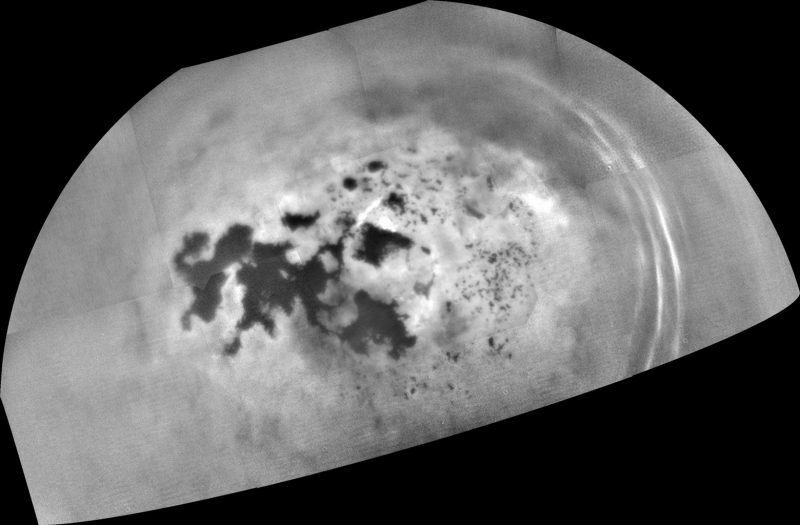
Will the methane on Titan disappear?
Although there’s a regular methane cycle, it’s possible that the methane will still eventually disappear. When the sunlight or electrons break apart the methane in the upper atmosphere, some of the resulting hydrogen escapes into space. That means the methane will gradually be depleted, unless it is replenished somehow. Nixon said:
On Titan, methane is a consumable. It’s possible that it is being constantly resupplied and fizzing out of the crust and interior over billions of years. If not, eventually it will all be gone and Titan will become a mostly airless world of dust and dunes.
Some scientists think the methane is indeed being replenished, or it would have already vanished by now. Much of it might come from underground, perhaps from methane-rich ice deposits. It could outgas to the surface through cryovolcanic eruptions (“cold” volcanic eruptions with icy fluids instead of hot lava).
NASA’s Dragonfly mission is scheduled to launch in 2028 and land on Titan in 2034. The drone-like rotorcraft will explore Titan’s landscape up close, flying to various locations on this fascinating world.
?? Webb's Titan forecast: partly cloudy with occasional methane showers.A science team has combined data from the NASA/ESA/CSA James Webb Space Telescope and the Keck II telescope to see evidence of cloud convection on Saturn’s moon Titan in the northern hemisphere for the first time! ? ?
Bottom line: Astronomers have seen convective clouds in the northern regions of Saturn’s moon Titan for the first time. The methane rains replenish Titan’s lakes and seas.
Source: The atmosphere of Titan in late northern summer from JWST and Keck observations
Source (preprint): The Atmosphere of Titan in Late Northern Summer from JWST and Keck Observations
Read more: Is there life on Titan? If so, it’s very rare
Read more: Do Titan’s seas resemble earthly seas? Researchers say yes
The post Frigid Titan has soaring, bubbling clouds with unusual rains first appeared on EarthSky.
Stay Informed With the Latest & Most Important News
Previous Post
Next Post
-
 012024 in Review: Highlights from NASA in Silicon Valley
012024 in Review: Highlights from NASA in Silicon Valley -
 02Panasonic Leica Summilux DG 15mm f/1.7 ASPH review
02Panasonic Leica Summilux DG 15mm f/1.7 ASPH review -
 03From Polymerization-Enabled Folding and Assembly to Chemical Evolution: Key Processes for Emergence of Functional Polymers in the Origin of Life
03From Polymerization-Enabled Folding and Assembly to Chemical Evolution: Key Processes for Emergence of Functional Polymers in the Origin of Life -
 04How New NASA, India Earth Satellite NISAR Will See Earth
04How New NASA, India Earth Satellite NISAR Will See Earth -
 05And Thus Begins A New Year For Life On Earth
05And Thus Begins A New Year For Life On Earth -
 06Astronomy Activation Ambassadors: A New Era
06Astronomy Activation Ambassadors: A New Era -
07SpaceX launch surge helps set new global launch record in 2024













